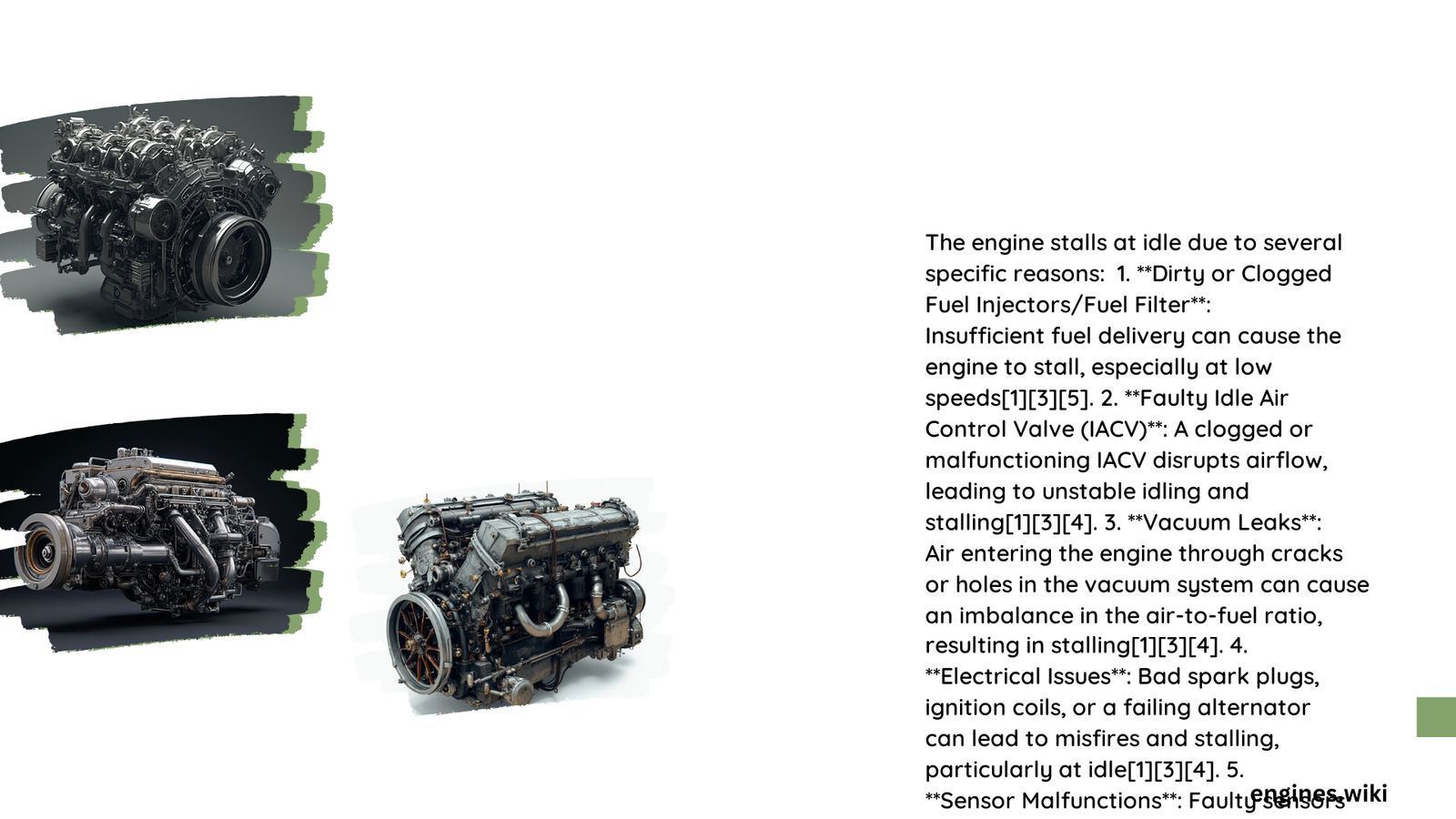Engine stalling at idle is a frustrating and potentially dangerous automotive issue that can stem from multiple complex mechanical and electrical system failures. Modern vehicles rely on intricate interactions between sensors, fuel delivery systems, and air control mechanisms to maintain stable engine performance. Understanding these interconnected systems is crucial for diagnosing and resolving idle stalling problems effectively.
What Causes Idle Air Control Valve Failures?
How Does IAC Valve Impact Engine Performance?
The Idle Air Control (IAC) valve plays a critical role in maintaining consistent engine idle speed. Here’s a detailed breakdown of its functionality:
| Performance Parameter | Normal Range | Potential Issue |
|---|---|---|
| Idle RPM | 600-1000 RPM | Fluctuating Speed |
| Air Regulation | Precise Air Management | Insufficient Air Supply |
| Load Handling | Stable Performance | Stalling Under Load |
Key Diagnostic Indicators
- Irregular idle speed fluctuations
- Engine stalling when additional electrical systems are activated
- Inconsistent RPM readings
What Fuel Delivery Problems Lead to Stalling?
Fuel delivery issues can significantly contribute to engine stalling at idle:
- Fuel Pressure Irregularities
- Disrupted air-fuel mixture ratios
- Potential rich or lean combustion scenarios
-
Compromised fuel injector performance
-
Mixture Imbalance Consequences
- Rich mixture: Potential backfiring
- Lean mixture: Increased stalling probability
How Do Vacuum Leaks Affect Engine Stability?
Vacuum leaks can dramatically impact engine performance:
- Diagnostic Methods
- Soap and water leak detection
- Vacuum gauge testing
-
Visual inspection of intake system components
-
Potential Leak Locations
- Intake manifold gaskets
- Vacuum hoses
- Throttle body connections
What Sensor Malfunctions Trigger Idle Stalling?
Critical sensors that influence engine stability include:
- Coolant Temperature Sensor
- Operating range: -40°C to 120°C
-
Impacts ECU air-fuel mixture calculations
-
Throttle Position Sensor
- Voltage range: 0.5V to 4.5V
- Provides critical throttle position data
Recommended Diagnostic Approach
When experiencing persistent idle stalling:
- Conduct comprehensive sensor diagnostics
- Check IAC valve functionality
- Inspect vacuum system integrity
- Verify fuel system pressure and delivery
Professional Maintenance Tips

- Regular sensor calibration
- Periodic IAC valve cleaning
- Comprehensive vacuum system inspection
- Use high-quality diagnostic equipment
Warning Signs Requiring Immediate Attention
- Consistent engine stalling
- Unpredictable idle behavior
- Reduced fuel efficiency
- Check engine light activation
Cost Considerations
| Repair Type | Estimated Cost Range |
|---|---|
| Sensor Replacement | $50 – $300 |
| IAC Valve Repair | $150 – $500 |
| Comprehensive Diagnostic | $80 – $200 |
Final Recommendations
Professional diagnosis remains the most reliable method for resolving complex idle stalling issues. While DIY troubleshooting can provide initial insights, complex modern vehicle systems often require specialized diagnostic equipment and expertise.
